Lucas Foglia’s latest book, Human Nature, published this autumn by Nazraeli Press, is the result of a long quest to understand the effect people and the environment can have on each other. “It is about our current relationship with wild landscapes,” says Foglia. “How we need them and how they are changing because of us.”
Born in 1983 in the United States, the photographer grew up on a small farm some 30 miles east of New York city. His family grew their own food and lived a life away from the bustle of shopping centres and the surrounding suburbs. “The forest that bordered the farm was my childhood wilderness,” he says. “It was a wild place to play that was ignored by our neighbours, who commuted to Manhattan.”
But in 2012 Hurricane Sandy charged through his family’s fields, flooding the farm and blowing down the oldest trees in the woods. “On the news, scientists linked the storm to climate change caused by human activity,” Foglia recalls. “I realised that if humans are changing the weather then there is no place on earth unaltered by people. I looked through my archive and set aside some photographs that became the seeds for my third book.”
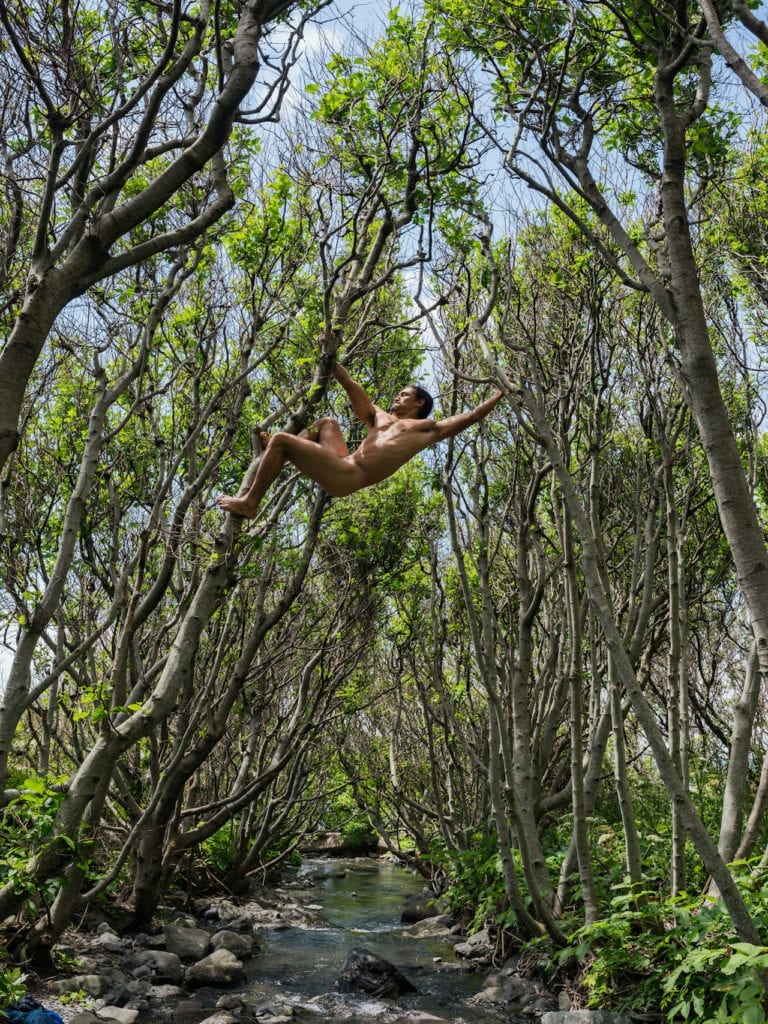
Matt Swinging between Trees, Lost Coast, California. From the series Human Nature © Lucas Foglia
“I photograph because I have questions about the world and my role in it – and I love the fact that a photographic series can be used in so many different ways,” he says. “A book, to me, is the completion of a series. I exhibit prints of my photographs in galleries and museums, and publish the images in newspapers, magazines and on social media.
“I also give copies to local and national organisations to use for advocacy. All are different methods of storytelling. I’m grateful for them and I think there is art in each of those methods.”
Foglia has travelled all over the world to collect and document, financing his project through the sale of limited-edition prints from previous series, as well as making work for Bloomberg Businessweek Magazine, National Geographic, The New York Times Magazine, Outside Magazine, Sierra Club and Winrock Foundation, among others. But he began his research close to home, photographing prisoners gardening on Rikers Island in New York.
“I visited places that felt like they deserved attention, such as the south-eastern coast of the Big Island of Hawaii,” he says. “Its molten lava is arguably the only land completely untouched by people. According to the National Oceanic and Atmospheric Administration [NOAA], this part of Hawaii also has the cleanest air on earth.”
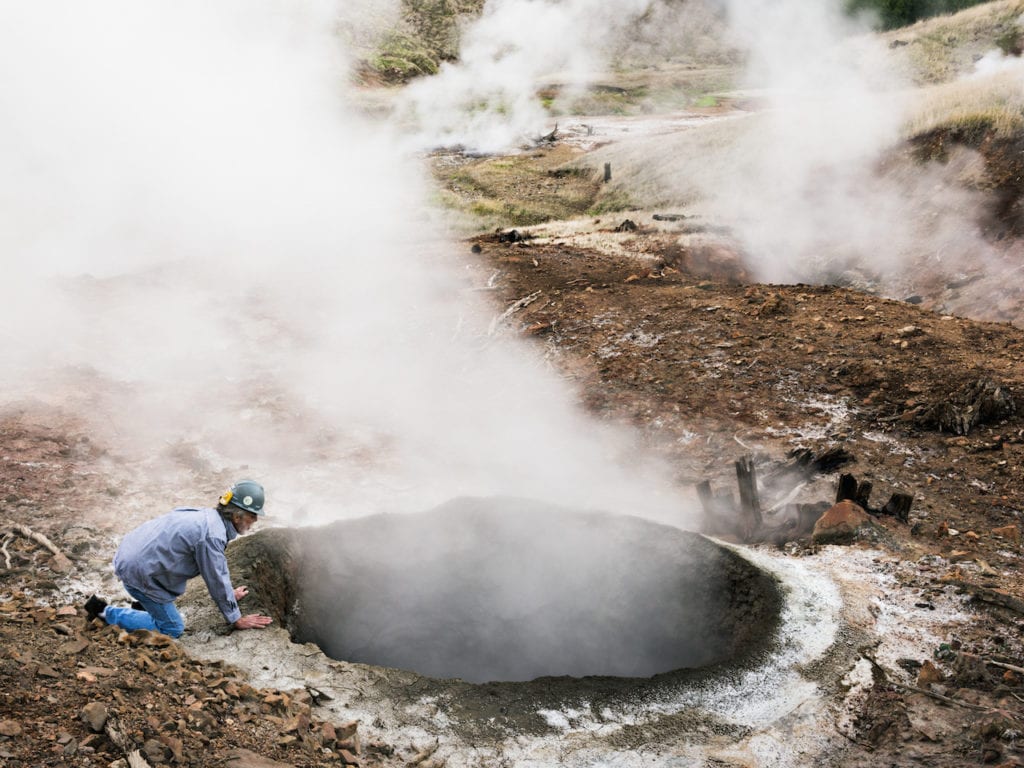
Chuck Taking Sample Readings at the Geysers, the World’s Largest Geothermal Field, California. From the series Human Nature © Lucas Foglia
He also asked the scientists what books they would recommend to anyone who wants to learn more about how we change nature or how spending time in wild places changes us – a list of which is included on the final page of Human Nature. “The climate is changing because of us,” says Foglia. “In that way we are big.
“But we are also vulnerable to the storms, droughts, heat waves and freezes that result from climate change. In the face of those events, I feel rather small. Scientists are in the position to see how we need to reconnect with nature in order to survive as a species. Yet most of those I photographed are at risk of losing funding. The Trump administration has already proposed cutting the NOAA’s budget by 17 percent, including making a 26 percent cut to research.”
The final edit is made up of 58 images made between 2006 and 2017, Foglia explains, “beginning and ending with interpretations of paradise, and moving through cities, forests, farms, deserts, ice fields and oceans in between”. They are not journalistic and don’t try to tell a linear story. “The photographs are connected by colour, composition and content,” he says.
Besides the reading list, the book has only a brief introduction by Foglia and short picture captions written by his sister Laurel. “I like the idea that a photograph can provoke a viewer to want to know the backstory,” he says. “We include enough information so a reader can learn more if they choose to. I’m also collaborating with magazines and newspapers to publish those stories individually, with images from the book as well as images that aren’t included in the book.”
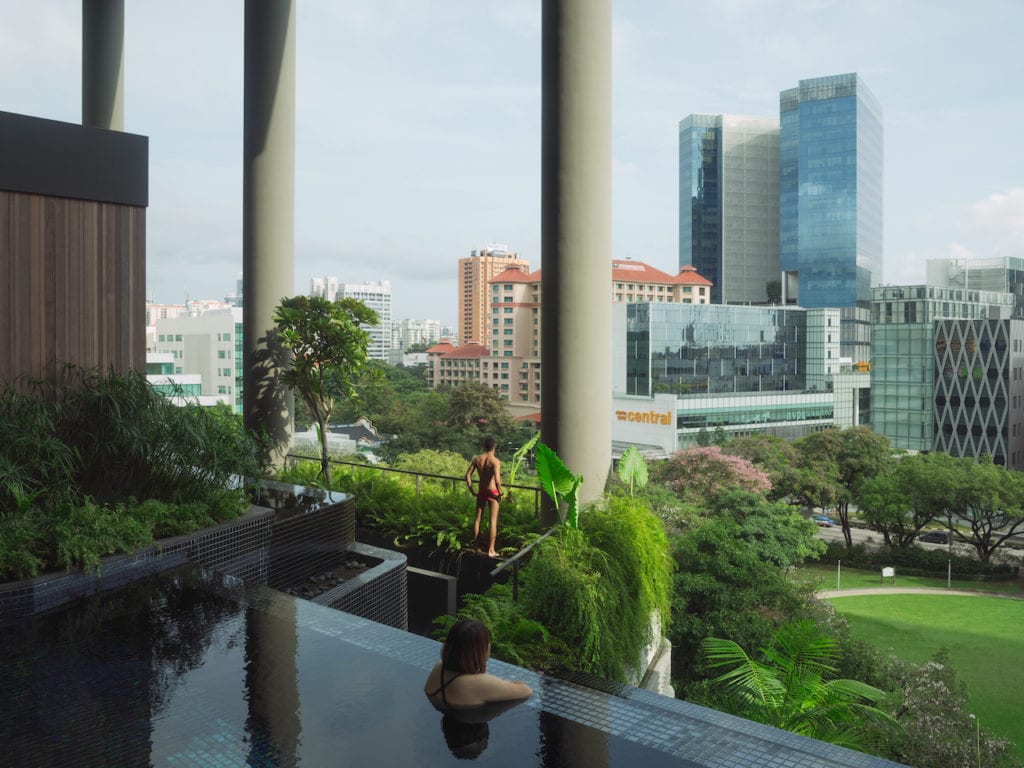
Hafiz and Stasia on a Staycation, Parkroyal on Pickering, Singapore. From the series Human Nature © Lucas Foglia
“The photographers in New Topographics were more objective. Their photographs said, ‘Here is what people are doing; make of it what you will.’”
So does Foglia consider himself an activist or is he first and foremost a professional photographer? “I think a healthy environment should be considered a human right and our responsibility,” he says. “I want my photographs to bring attention to people and places that, in my opinion, deserve attention. At the same time, I want to compel viewers to think and feel without telling them what to think or feel. That is what separates art from propaganda.”
Born in 1983 in the United States, the photographer grew up on a small farm some 30 miles east of New York city. His family grew their own food and lived a life away from the bustle of shopping centres and the surrounding suburbs. “The forest that bordered the farm was my childhood wilderness,” he says. “It was a wild place to play that was ignored by our neighbours, who commuted to Manhattan.”
But in 2012 Hurricane Sandy charged through his family’s fields, flooding the farm and blowing down the oldest trees in the woods. “On the news, scientists linked the storm to climate change caused by human activity,” Foglia recalls. “I realised that if humans are changing the weather then there is no place on earth unaltered by people. I looked through my archive and set aside some photographs that became the seeds for my third book.”

“I photograph because I have questions about the world and my role in it – and I love the fact that a photographic series can be used in so many different ways,” he says. “A book, to me, is the completion of a series. I exhibit prints of my photographs in galleries and museums, and publish the images in newspapers, magazines and on social media.
“I also give copies to local and national organisations to use for advocacy. All are different methods of storytelling. I’m grateful for them and I think there is art in each of those methods.”
Foglia has travelled all over the world to collect and document, financing his project through the sale of limited-edition prints from previous series, as well as making work for Bloomberg Businessweek Magazine, National Geographic, The New York Times Magazine, Outside Magazine, Sierra Club and Winrock Foundation, among others. But he began his research close to home, photographing prisoners gardening on Rikers Island in New York.
“I visited places that felt like they deserved attention, such as the south-eastern coast of the Big Island of Hawaii,” he says. “Its molten lava is arguably the only land completely untouched by people. According to the National Oceanic and Atmospheric Administration [NOAA], this part of Hawaii also has the cleanest air on earth.”

He also asked the scientists what books they would recommend to anyone who wants to learn more about how we change nature or how spending time in wild places changes us – a list of which is included on the final page of Human Nature. “The climate is changing because of us,” says Foglia. “In that way we are big.
“But we are also vulnerable to the storms, droughts, heat waves and freezes that result from climate change. In the face of those events, I feel rather small. Scientists are in the position to see how we need to reconnect with nature in order to survive as a species. Yet most of those I photographed are at risk of losing funding. The Trump administration has already proposed cutting the NOAA’s budget by 17 percent, including making a 26 percent cut to research.”
The final edit is made up of 58 images made between 2006 and 2017, Foglia explains, “beginning and ending with interpretations of paradise, and moving through cities, forests, farms, deserts, ice fields and oceans in between”. They are not journalistic and don’t try to tell a linear story. “The photographs are connected by colour, composition and content,” he says.
Besides the reading list, the book has only a brief introduction by Foglia and short picture captions written by his sister Laurel. “I like the idea that a photograph can provoke a viewer to want to know the backstory,” he says. “We include enough information so a reader can learn more if they choose to. I’m also collaborating with magazines and newspapers to publish those stories individually, with images from the book as well as images that aren’t included in the book.”

“The photographers in New Topographics were more objective. Their photographs said, ‘Here is what people are doing; make of it what you will.’”
So does Foglia consider himself an activist or is he first and foremost a professional photographer? “I think a healthy environment should be considered a human right and our responsibility,” he says. “I want my photographs to bring attention to people and places that, in my opinion, deserve attention. At the same time, I want to compel viewers to think and feel without telling them what to think or feel. That is what separates art from propaganda.”
lucasfoglia.com Human Nature by Lucas Foglia is on show at Michael Hoppen Gallery, London until 21 October www.michaelhoppengallery.com The photobook Human Nature is published by Nazraeli Press and costs $60 www.nazraeli.com This interview was first published in the November edition of BJP, available via www.thebjpshop.com
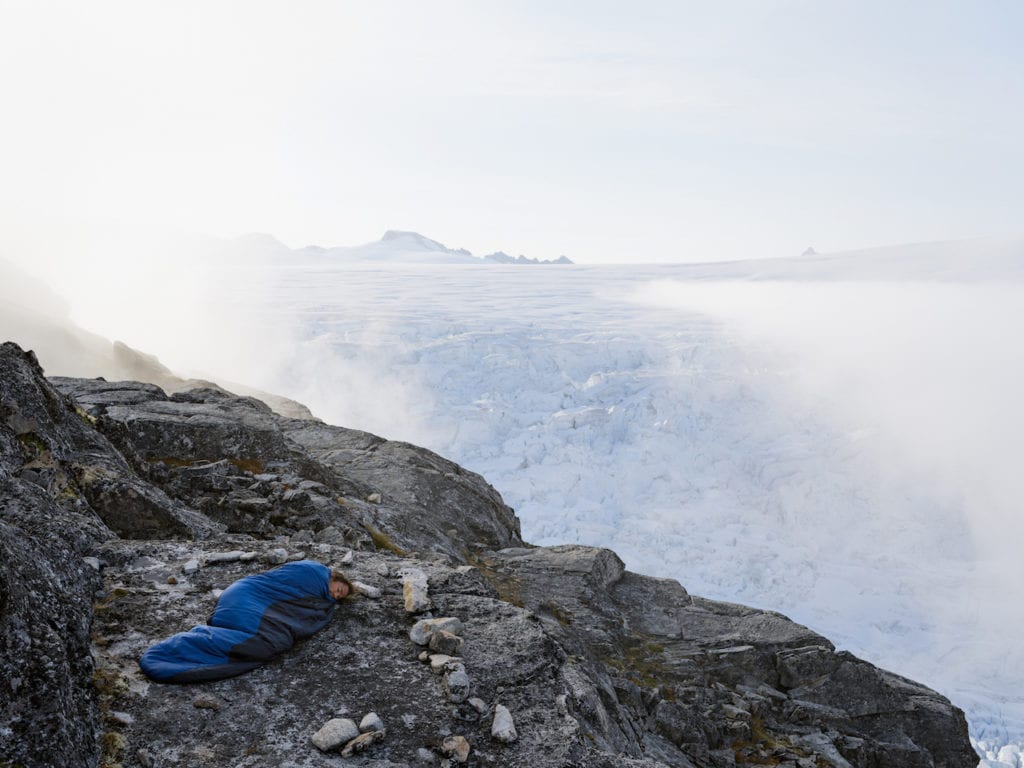
Evan Sleeping at Camp 18, Juneau Icefield Research Program, Alaska. From the series Human Nature © Lucas Foglia 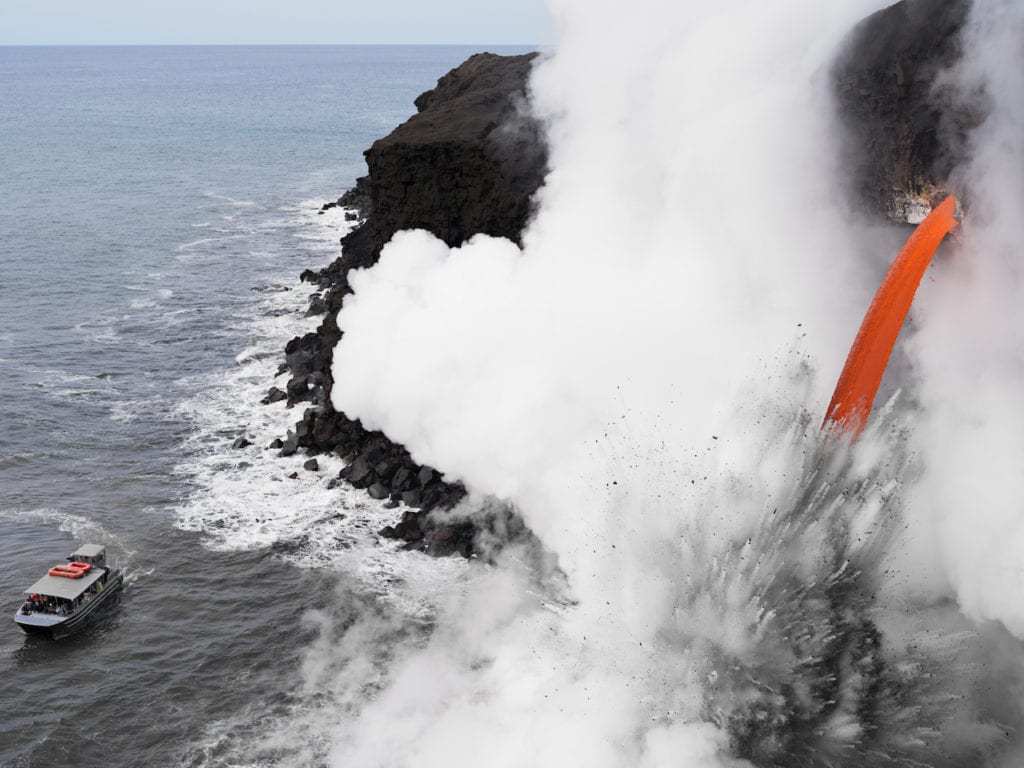
Lava Boat Tour, Hawaii, from the series Human Nature © Lucas Foglia



